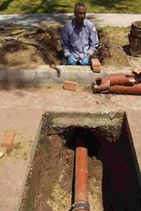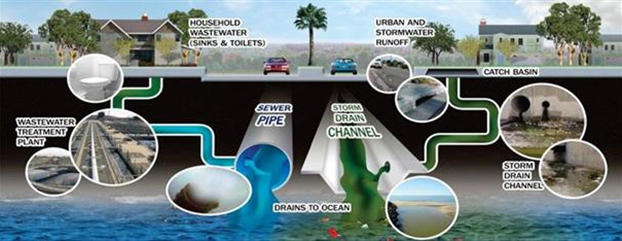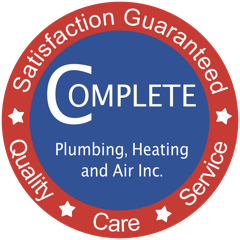HISTORY OF THE CITY OF WESTMINSTER
The suburban residential tracts developed in Westminster in the 1920s-1950s are still a prominent fixture of the community’s urban fabric as the majority of the City’s acres support residential uses. In 1924 the Midway City subdivision began construction, followed shortly by Barber City in 1927. During the 1920s, the world’s largest goldfish farm moved into the area where the Westminster Mall stands today.
Despite the growth of the community in the 1920s, the Great Depression stifled growth for much of the 1930s. In addition to the economic strains of the Depression, natural disasters including a major earthquake in 1933 and a severe flood in 1938 held Westminster back from embracing the development the city experienced in its early years.
Despite its stagnant growth in the early 1900s, by the 1940s and 1950s, the nationwide war and post-war boom brought exponential population growth to most areas throughout Southern California, especially those communities with access to jobs near the ports and aeronautic facilities. Following the war, servicemen who were located in Southern California decided to stay for the warm climate, and many large housing tracts grew around the agricultural lands of Westminster. The City’s population nearly quadrupled during this time from 2,500 in 1942 to nearly 10,800 in 1956.
In 1957, proceedings began to form a municipality called Tri-City, in a proposal to combine three communities into one: Westminster, Barber City, and Midway City. Before the vote, Midway City withdrew from the venture and remains unincorporated today. The proposal to incorporate Westminster and Barber City was approved by a vote of 1,096 to 1,008, and Westminster became California’s 337th city in 1957.
By 1963, the Orange County population had surpassed one million, like tourism, manufacturing and the service industries took over local economies once Disneyland opened its gates in 1955. During the 1960s, Westminster’s population exploded, more than doubling in a single decade from 25,000 at the beginning of the 1960s to 60,000 by 1970. As a result, the majority of the City’s residential neighborhoods were built during this time. Westminster continued to thrive throughout the 1960s and 1970s, especially after the Southland Freeway (I-405) system was completed and the Westminster Mall was constructed, the latter of which became a regional attraction that continues to be the City’s primary sales tax generator. As commerce and tourism continued to develop throughout the city and county, municipal construction projects in Westminster—including a new administration building, senior citizens facility, fire department buildings, and a renovation of the civic auditorium—demonstrated the prosperity of the time. By the end of the 1970s, very little vacant land remained in Westminster, and some of the community’s older buildings had already reached the end of their useful life and were redeveloped.
WHERE DOES WESTMINSTER CITY WATER COME FROM?
The City of Westminster’s water supply is a blend of groundwater managed by the Orange County Water District (OCWD) and water imported from Northern California and the Colorado River. Imported water is purchased from MWDSC by the Municipal Water District of Orange County(MWDOC), which distributes it to water agencies in Orange County. Groundwater comes from a natural underground aquifer that is replenished with water from the Santa AnaRiver, local rainfall, and imported water. The groundwater basin is 350square miles and lies beneath north and central Orange County from Irvine to the Los Angeles border, and from Yorba Linda to the Pacific Ocean. Westminster has 10 groundwater wells located throughout the City and three import water connections. On average, 75% of our drinking water is produced from our groundwater wells and 25% is imported.
ARE THERE CONTAMINANTS IN WESTMINSTER CITY WATER?
The sources of drinking water (both tap water and bottled water) include rivers, lakes, streams, ponds, reservoirs, springs and wells. As water travels over the surface of the land or through the layers of the ground it dissolves naturally-occurring minerals and, in some cases, radioactive material, and can pick up substances resulting from the presence of animal and human activity. Contaminants that may be present in source water include:
Pesticides and herbicides, which may come from a variety of sources such as agriculture, urban stormwater runoff, and residential uses.
Microbial contaminants, such as viruses and bacteria, which may come from sewage treatment plants, septic systems, agricultural livestock operations, and wildlife. Radioactive contaminants, which can be naturally occurring or be the result of oil and gas production or mining activities. Inorganic contaminants, such as salts and metals, which can be naturally occurring or result from urban storm runoff, industrial or domestic wastewater discharges, oil and gas production, mining and farming. Organic chemical contaminants, including synthetic and volatile organic chemicals, which are by-products of industrial processes and petroleum production, and can also come from gasoline stations, urban stormwater runoff, agricultural application and septic systems
SHOULD I DRINK AND BATHE WITH WESTMINSTER CITY WATER STRAIGHT FROM MY FAUCET?
Some people may be more vulnerable to contaminants in drinking water than the general population. Immuno-compromised people, such as those with cancer who are undergoing chemotherapy, persons who have had organ transplants, people with HIV/AIDS or other immune system disorders, some elderly persons and infants can be particularly at risk from infections. These people should seek advice about drinking water from their health care providers. The USEPA and the federal Centers for Disease Control guidelines on appropriate means to lessen the risk of infection by Cryptosporidium and other microbial contaminants are available from USEPA’s Safe Drinking Water Hotline at (800) 426-4791 between 10 a.m. and 4 p.m. Eastern Time (7 a.m. to 1 p.m. in California)- source: 2019WestminsterWater consumer confidence report.
https://www.westminster-ca.gov/civicax/filebank/blobdload.aspx?blobid=15277
Complete Plumbing recommends installing a Catalytic Carbon Whole house water filtration system by Aqualistic Water Products to remove most of the harmful chemicals in your city water, leaving you with bottled quality water at every faucet in your home.
WESTMINSTER PLUMBING TIPS
Fix leaky faucets. For every leak stopped, you can save 20 gallons of water per day. Develop a watering schedule for your irrigation system. To learn more, visit www.bewaterwise.com/calculator.html.
Use native plants in your landscaping. Planting and maintaining beautiful California native and water-friendly plants can save between 1,000 and 1,800 gallons per month. Install a high-efficiency toilet or clothes washer. A temporary rebate program is still available. Other rebates are also available for sprinklers and artificial turf. To learn more, visitwww.ocwatersmart.com. MWDSC has its own water conservation website. To find out more information on water-saving plants and other useful tips, visit www.bewaterwise.com.
WESTMINSTER RESIDENTS should make sure that their plumbing systems are in good working order and are leak-free. This is important, not only for saving money on your water bill and limiting damages to property, but it is our responsibility to provide clean fresh water for future generations.
DID YOU KNOW?
Water Leaks:
- Nationwide, more than 1 trillion gallons of water are lost annually due to household leaks. That’s equal to the annual water use of more than 11 million homes.
- The average household can waste more than 10,000 gallons each year due to correctable leaks. That’s enough to wash 270 loads of laundry!
- Ten percent of homes have leaks that waste 90 gallons or more per day! Common sources include toilets, faucets, showerheads, and landscape irrigation. But you should also consider less obvious sources of leaks: water heaters, ice makers, dishwashers, and filtration systems. Many of these are easily correctable, and fixing them can save about 10 percent on the average water bill.
- Be sure to check your toilet for leaks at least once a year. Put food coloring in the tank. If it seeps into the bowl without flushing, there’s a leak. And if your toilet flapper doesn’t close properly after flushing, replace it.
- Remember, one drip a second adds up to five gallons lost per day!
So regularly check your faucets and showerheads, as well as all hoses and connectors. - Many household leaks can be solved with simple tools and a little education — and fortunately, Do-It-Yourselfers have access to multiple resources. But even if you must pay for repairs, you will still save money in the long run. For more information on water conservation, visit ocwatersmart.com.
- Complete plumbing provides leak detection of even the smallest amount of water which could prevent costly water bills and possible damage due to water leaks
- Complete plumbing utilizes automatic water shut off valves that detect leaks, automatically shuts off the water to your home then sends you an alert via a smartphone app. You can turn the water on and off, monitor water usage and temperature right from your phone!
WESTMINSTER CITY SEWER DRAINAGE SYSTEM
The 22-mile-long Big Dry Creek Interceptor Sewer system collects sewage and wastewater from about two-thirds of the city of 110,000 people. It serves nearly all of Westminster north of West 92nd Avenue and south of 124th Avenue.

• Most Los Alamitos homes have just one main sewer pipe that connects the sewer system from their house to the city’s main sewer system. Homeowners are required to maintain that sewer pipe up to and including the middle of the street and may be responsible for repair costs should a problem occur.
• Complete Plumbing can use a sewer drain camera and location device to inspect sewer lines for breaks, cracks root intrusions. This simple examination of your sewer system may save thousands of dollars in repair costs.
What is Storm Water Pollution?

Stormwater is water from rain that does not soak into the ground. It flows over paved areas like streets, sidewalks, and parking lots, as well as roofs and sloped lawns. As it flows, the stormwater collects and carries pollutants such as litter, pet waste, pesticides, fertilizers, and motor oil. This “toxic soup” then flows through a massive system of pipes and channels directly into our local waterways and the ocean.
What is the difference between the storm drain system and the sanitary sewer system?
The storm drain system and sanitary sewer system are both large conveyance systems of underground pipes. This leads to the misconception that the systems are one and the same. They are in fact separated and serve different purposes.
The sanitary sewer system transports domestic sewage to a treatment plant. Domestic sewage includes wastewater from household and commercial plumbing, such as toilets, showers, and sinks. There, contaminants are removed from the sewage through a multi-stage process, which includes settling, filtering, and biological and chemical treatment. The treated water is then discharged into local waterways or used as reclaimed water.
The storm drain system, on the other hand, was designed to prevent cities from flooding. Its purpose is to quickly transport rain runoff (stormwater) away from the city and into the nearest waterway, without treatment. And so, any pollution carried by stormwater also enters our waterways untreated.

We have been serving Westminster Residents for over 30 years and know a lot about Westminsterwater filtration systems, Westminster Plumbing Systems, Westminsterheating, and air conditioning systems, Westminstertankless water heaters, Westminster drain cleaning
Call and ask about our Westminster residents specials
READY TO GET STARTED?